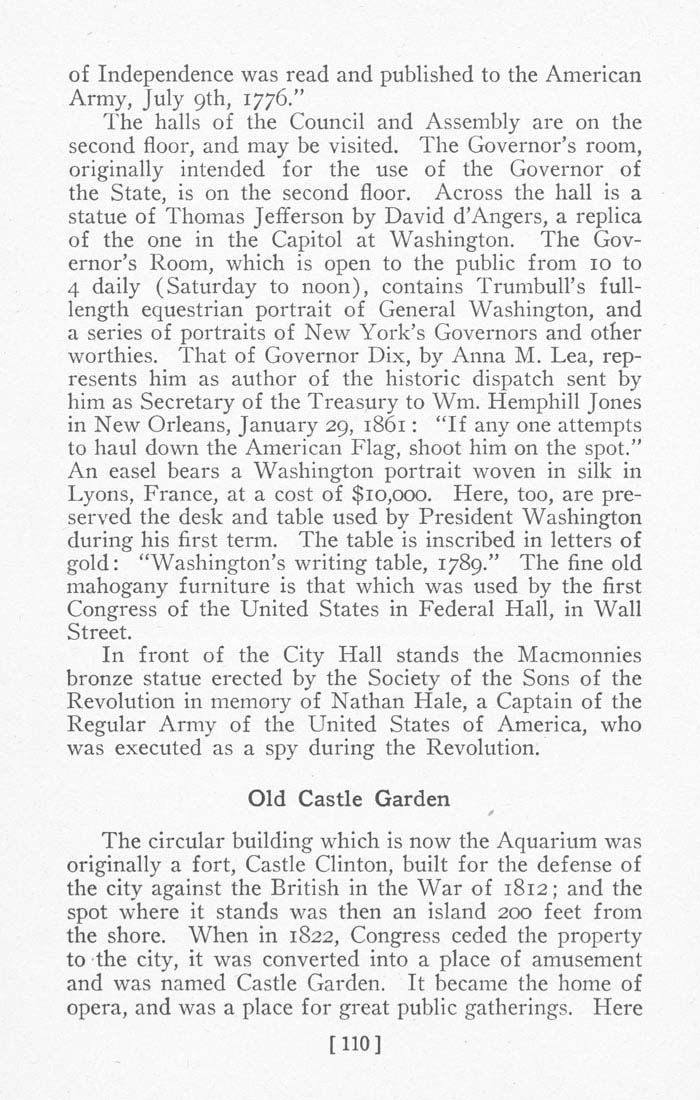of Independence was read and published to the American
Army, July 9th, 1776."
The halls of the Council and Assembly are on the
second floor, and may be visited. The Governor's room,
originally intended for the use of the Governor of
the State, is on the second floor. Across the hall is a
statue of Thomas Jefferson by David d'Angers, a replica
of the one in the Capitol at Washington. The Gov¬
ernor's Room, which is open to the public from 10 to
4 daily (Saturday to noon), contains Trumbull's full-
length equestrian portrait of General Washington, and
a series of portraits of New York's Governors and other
worthies. That of Governor Dix, by Anna M. Lea, rep¬
resents him as author of the historic dispatch sent by
him as Secretary of the Treasury to Wm. Hemphill Jones
in New Orleans, January 29, 1861: "If any one attempts
to haul down the American Flag, shoot him on the spot."
An easel bears a Washington portrait woven in silk in
Lyons, France, at a cost of $10,000. Here, too, are pre¬
served the desk and table used by President Washington
during his first term. The table is inscribed in letters of
gold: "Washington's writing table, 1789." The fine old
mahogany furniture is that which was used by the first
Congress of the United States in Federal Hall, in Wall
Street.
In front of the City Hall stands the Macmonnies
bronze statue erected by the Society of the Sons of the
Revolution in memory of Nathan Hale, a Captain of the
Regular Army of the United States of America, who
was executed as a spy during the Revolution.
Old Castle Garden
The circular building which is now the Aquarium was
originally a fort. Castle Clinton, built for the defense of
the city against the British in the War of 1812; and the
spot where it stands was then an island 200 feet from
the shore. When in 1822, Congress ceded the property
to the city, it was converted into a place of amusement
and was named Castle Garden. It became the home of
opera, and was a place for great public gatherings. Here
[110]
|








